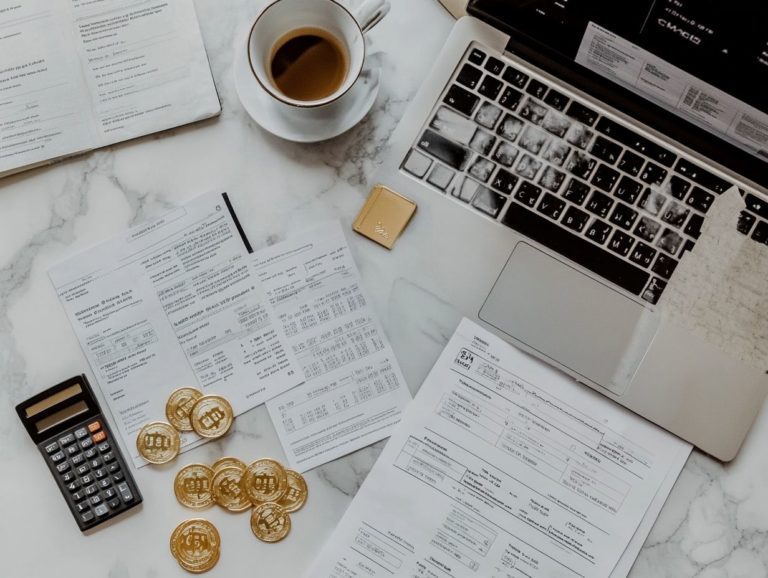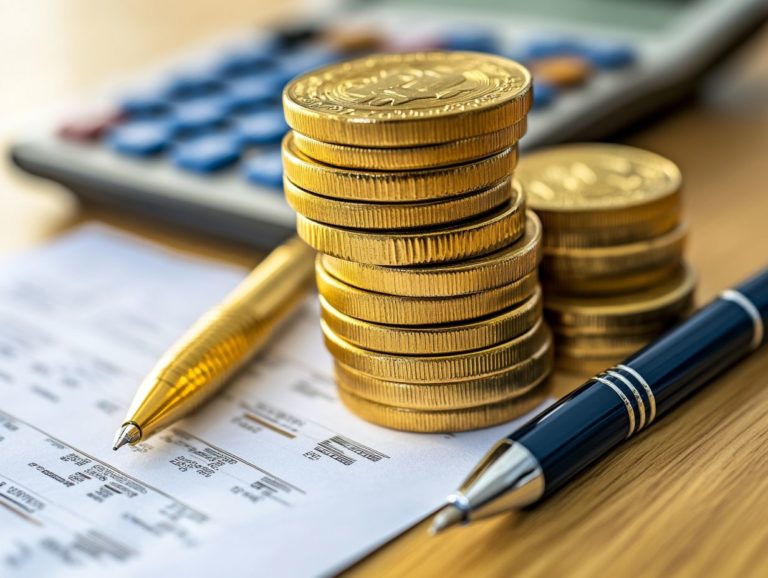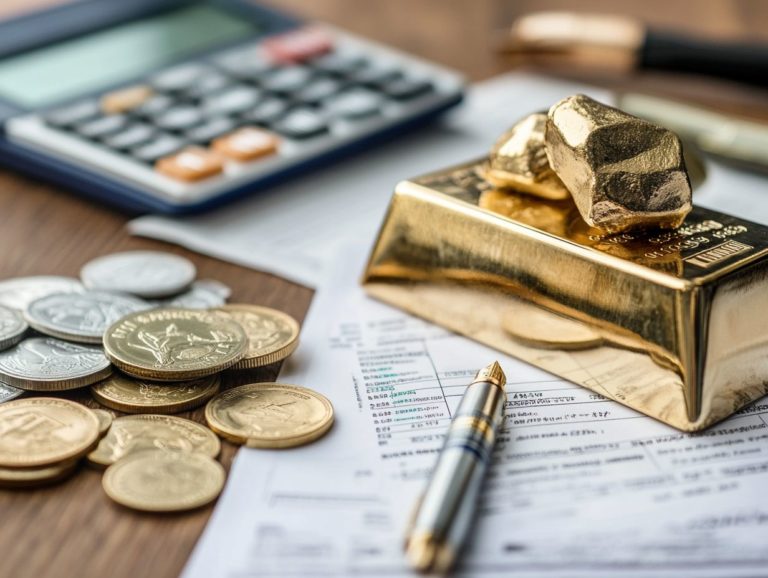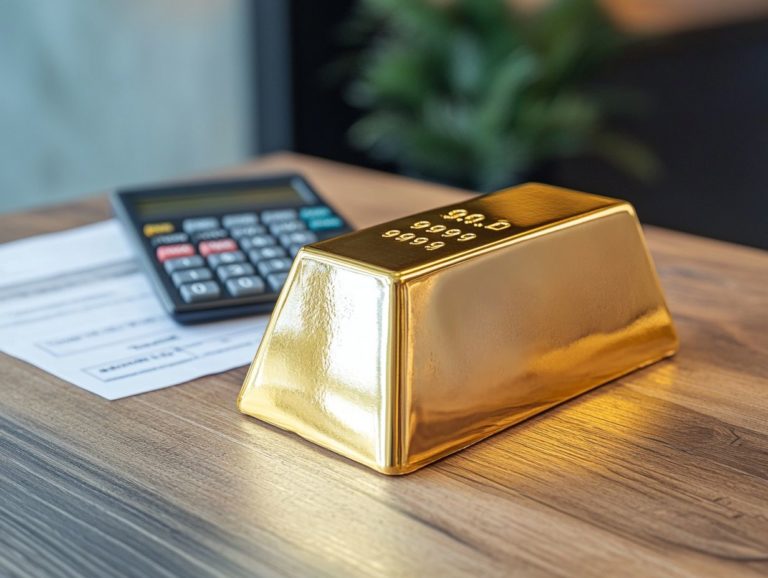Tax Strategies for Diversifying Your Precious Metals Portfolio
Investing in precious metals presents a strategic opportunity for you to enhance your financial portfolio.
With an array of metals at your disposal, grasping their unique benefits becomes essential.
This guide will explore the various types of precious metals and offer insights on effective diversification of your investments.
It addresses tax implications, strategies for minimizing capital gains, and provides essential tips for managing your portfolio.
By the conclusion, you will be equipped with the knowledge necessary to make informed decisions in this market.
Contents
- Key Takeaways:
- Diversifying Your Portfolio with Precious Metals
- Tax Considerations for Precious Metals Investments
- Tips for Managing Your Precious Metals Portfolio
- Frequently Asked Questions
- What are tax strategies for diversifying my precious metals portfolio?
- Can I use a self-directed IRA to invest in precious metals?
- What is the advantage of using a self-directed IRA for precious metal investments?
- Are there any tax implications when selling precious metals?
- How can I reduce my tax liability when selling precious metals?
- Do I have to pay taxes on precious metal investments in my non-retirement portfolio?
Key Takeaways:
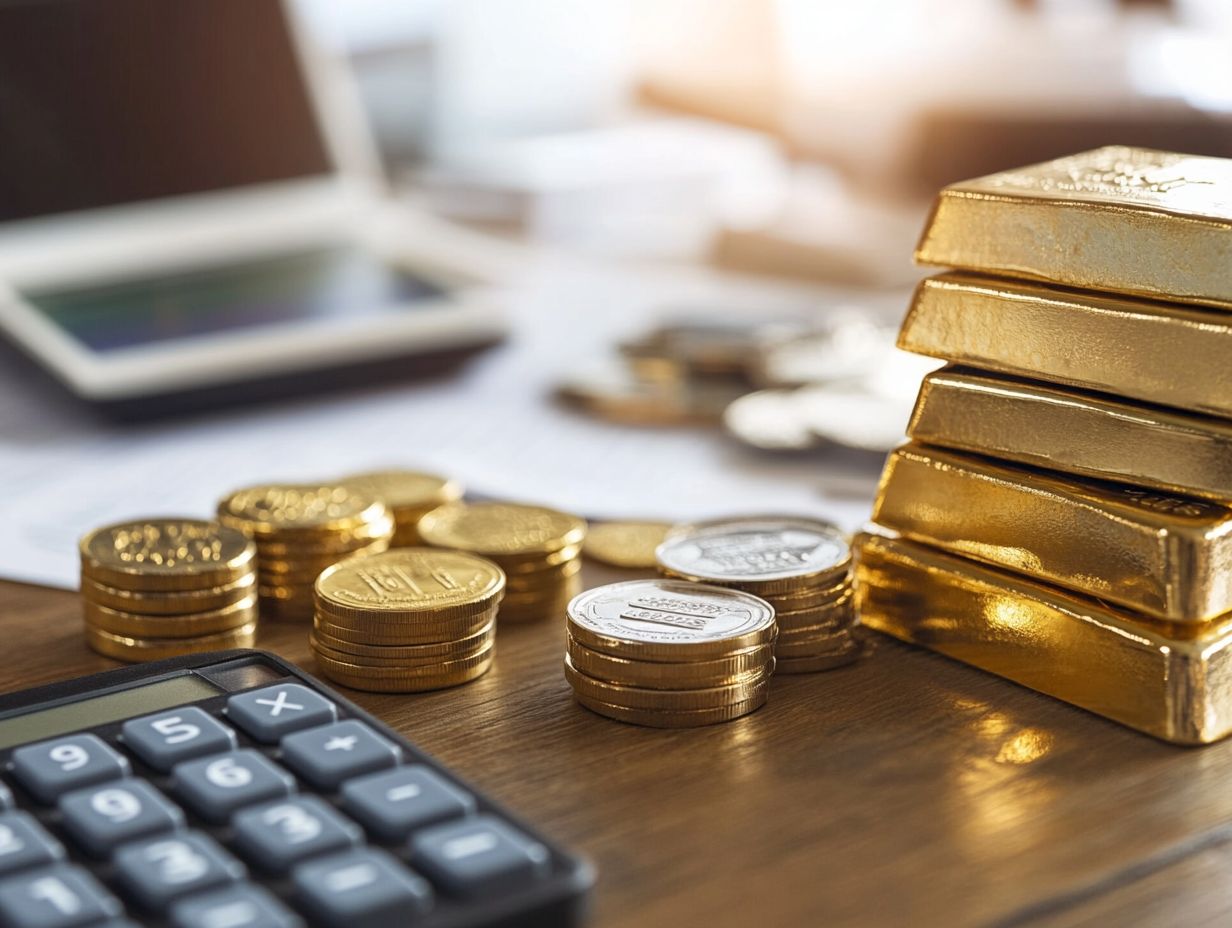
- Investing in precious metals can provide diversification and potential protection against market volatility.
- When diversifying your portfolio with precious metals, consider your ideal allocation and tax strategies to minimize capital gains.
- Properly managing your precious metals portfolio involves following best practices for buying, selling, storing, and insuring your investments.
Why Invest in Precious Metals?
Investing in precious metals is a time-honored strategy that can serve as a robust hedge against inflation and economic uncertainty, making them a key part of your diversified investment portfolio.
Their unique qualities help stabilize returns during market volatility and lay a solid foundation for achieving your financial goals.
During economic downturns, the intrinsic value of these metals often outshines traditional assets, offering you protection from losses that might plague stocks and bonds.
Historical trends clearly demonstrate that precious metals tend to retain their worth over extended periods. They occasionally even appreciate when you need it most. This characteristic makes them an appealing choice for anyone looking to implement effective investment strategies that prioritize risk management and long-term prosperity.
Types of Precious Metals
You have a variety of precious metals at your fingertips, each offering unique characteristics and investment opportunities. Gold and silver are the stars of the show, renowned for their use in physical investments and as coveted jewelry.
But don t overlook platinum and palladium; these metals provide excellent avenues for diversifying your portfolio in the precious metals market.
Consider venturing into mining stocks and ETFs (Exchange-Traded Funds) that focus on these metals. This approach enhances your liquidity while giving you access to commodity returns.
Investing in these metals goes beyond looks; they often act as a hedge against inflation and economic uncertainty.
For example, gold has long been regarded as a safe haven during market downturns, while silver is carving out a niche for itself in the industrial sector, driving robust demand. Platinum and palladium are essential in the automotive industry for catalytic converters, closely linking their performance to global automotive production trends.
By allocating a portion of your investment portfolio to mining stocks and ETFs, you can unlock significant advantages, including potential capital appreciation and dividend income. This makes them compelling options for anyone looking to make well-informed investment decisions.
Diversifying Your Portfolio with Precious Metals
Diversifying your investment portfolio with precious metals can greatly elevate your financial strategy.
These assets present distinct advantages that contribute to long-term wealth and effective risk management.
By adding precious metals like gold and silver to your portfolio, you can establish a balanced asset allocation that acts as a hedge against inflation and economic fluctuations.
This thoughtful diversification not only safeguards your capital but also ensures that your portfolio remains adaptable to shifting market dynamics and commodity returns, ultimately enhancing your investment performance.
Now that you’re armed with knowledge, take the next step towards securing your financial future with precious metals!
Benefits of Diversification
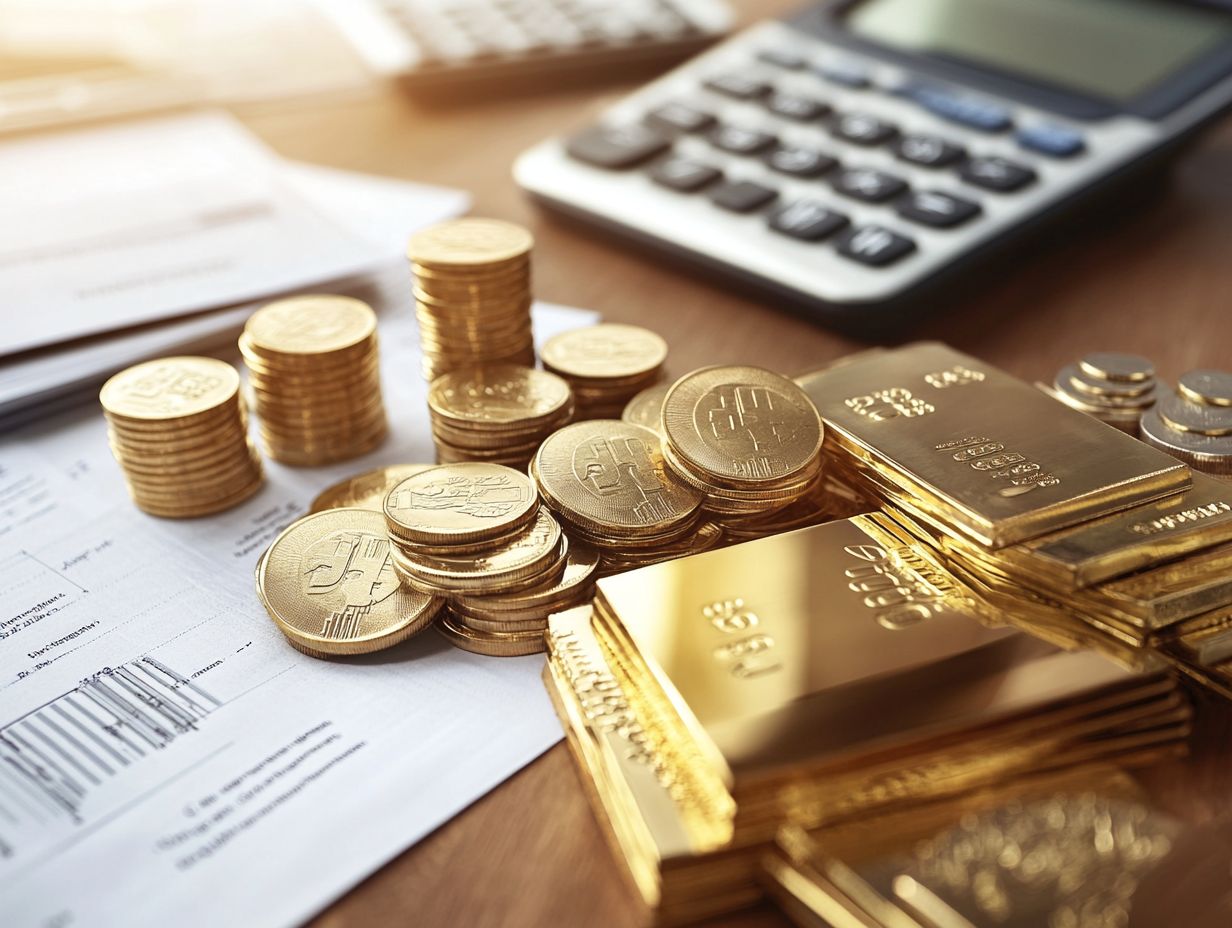
The benefits of diversification in your investment portfolio are numerous, especially when you consider incorporating precious metals as a safe haven during economic uncertainty. By spreading your investments across various asset classes, you can effectively reduce the risks of market ups and downs. This can help you work toward a more stable financial future.
Precious metals respond differently to economic conditions than stocks and bonds. They often maintain their value even amid inflationary pressures, which can significantly enhance your overall investment performance.
These distinctive qualities of precious metals, like gold and silver, serve as an effective hedge against market volatility and geopolitical unrest. This is particularly appealing during economic downturns when traditional investments may struggle. Including such assets in your portfolio can substantially reduce your overall risk exposure, resulting in greater stability for long-term wealth accumulation.
Investors like you often find that precious metals are a reliable store of value. They help preserve financial resources in rapidly changing economic environments, making them a judicious choice for those looking to secure their financial future.
How to Determine Your Ideal Allocation
Determining your ideal allocation of precious metals within your investment portfolio demands careful deliberation of your financial goals, risk tolerance, and overall investment strategy. Do thorough research by assessing market trends, historical data, and economic factors. This will guide you in deciding how much of your portfolio should be devoted to precious metals like gold, silver, and platinum.
A well-balanced asset allocation tailored to your unique circumstances can optimize long-term wealth accumulation and bolster your financial security.
To further enhance your investment approach, consider utilizing various assessment tools such as risk assessment questionnaires and portfolio analysis software. These resources can effectively illuminate potential allocation percentages based on your distinct investment profile.
Regularly reviewing your portfolio is important, as market conditions and personal situations evolve over time. This ensures it remains aligned with your shifting financial goals and strengthens your risk management strategies, ultimately fostering more informed investment decisions that lead to improved financial outcomes.
Tax Considerations for Precious Metals Investments
Understanding the tax considerations for your precious metals investments is crucial for maximizing your returns and avoiding surprises during tax time! Investing in precious metals carries specific tax implications, especially regarding capital gains tax. This can differ depending on how you hold the assets be it as physical metals, mining stocks, or ETFs.
Engaging with a tax professional can offer you invaluable insights into effectively managing your tax liabilities and meeting your reporting requirements.
Tax Advantages of Precious Metals
Investing in precious metals can provide you with several tax advantages, especially when you use tax-advantaged accounts like a gold IRA. These special types of investment accounts allow you to defer capital gains tax, enabling your investments to grow without the burden of immediate tax liabilities. By grasping the tax implications of these structures, you can enhance your overall investment strategy and optimize your long-term wealth accumulation.
Utilizing a gold IRA or similar accounts gives you the power to protect your assets against inflation while postponing tax consequences until you make withdrawals. This strategic approach not only enhances your financial planning but also aligns perfectly with your goals of wealth preservation.
You may also benefit from the potential deductibility of contributions within certain account types, allowing you to craft an efficient tax strategy.
By leveraging these accounts wisely, you can effectively mitigate taxable income in the long run, giving you the flexibility to reinvest gains and maximize your returns.
Tax Strategies for Minimizing Capital Gains
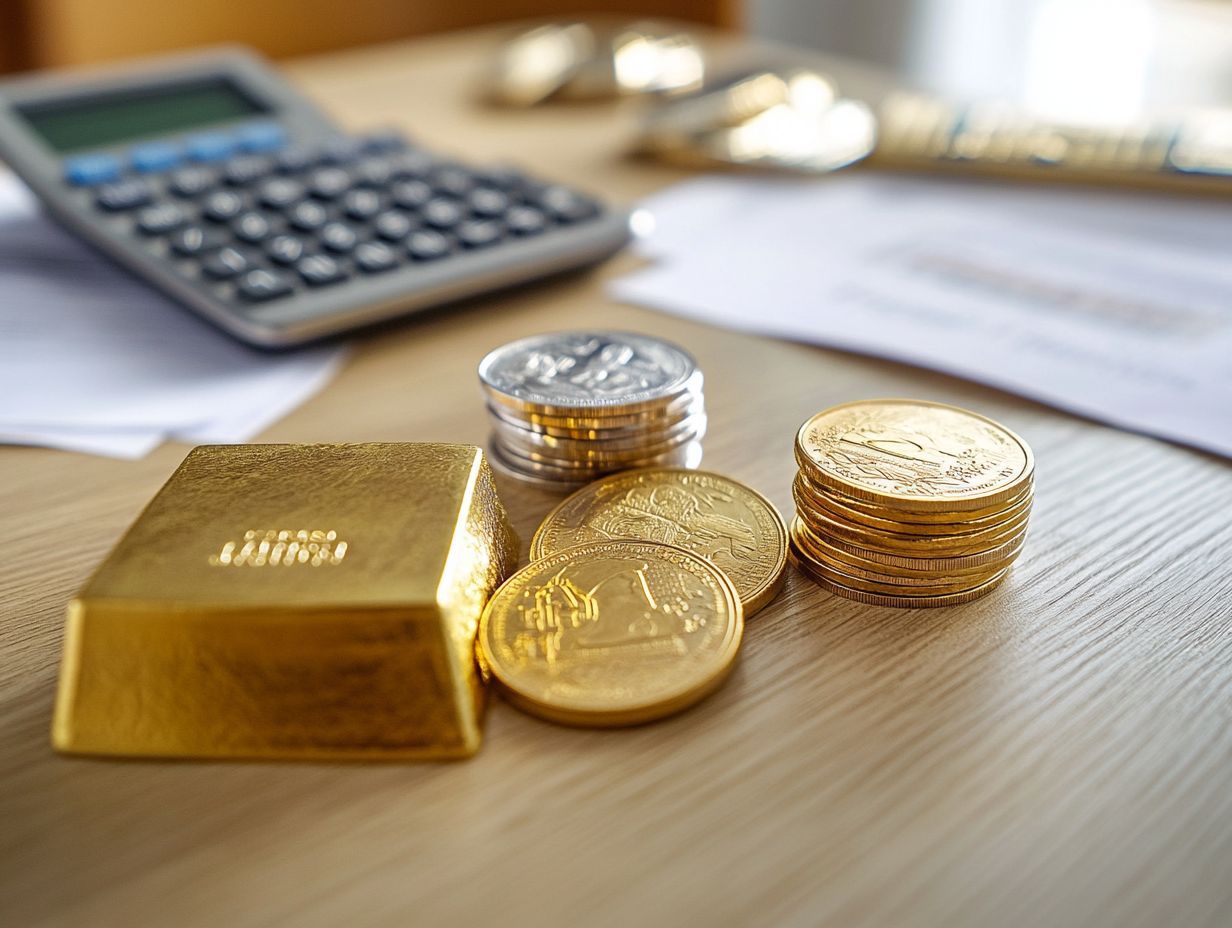
Minimizing capital gains tax is crucial for a strong investment strategy in precious metals. You can employ various tax strategies to achieve this goal. By keeping detailed records of your purchases, sales, and market performance, you will effectively track your capital gains and losses.
Consulting with a tax professional can offer personalized advice on tax-efficient methods for managing your investments, while ensuring compliance with tax regulations.
One practical strategy to consider is tax-loss harvesting. This involves selling underperforming assets to offset gains from more profitable investments. Timing your sales around tax deadlines can improve your tax efficiency, deferring tax liabilities.
Understanding the reporting obligations tied to these transactions is essential. Proper documentation ensures compliance.
In this context, financial planning serves two purposes: minimizing immediate tax burdens and aligning with your long-term investment goals. This ultimately optimizes your returns on precious metals investments.
Tips for Managing Your Precious Metals Portfolio
Effectively managing your precious metals portfolio requires a strategic approach that enhances investment performance and mitigates risk. Given the distinct characteristics of precious metals like gold, silver, and platinum, a personalized investment strategy helps capitalize on market dynamics while protecting your assets during economic instability.
Regular assessments and adjustments are also key. They play a vital role in optimizing your returns and keeping your investments strong.
Best Practices for Buying and Selling
Adhering to best practices for buying and selling precious metals is essential for maintaining liquidity and maximizing your investment strategy’s benefits.
To navigate the market’s complexities, conduct thorough market research and monitor economic indicators that can influence market dynamics. Understand factors such as interest rates, geopolitical events, and currency fluctuations. This understanding empowers you to make informed decisions about when to buy or sell.
By using techniques like diversification and recognizing the importance of liquidity, you can reduce risk and enhance potential returns. Staying informed about industry trends and historical performance equips you to seize opportunities in this evolving market.
Storing and Insuring Your Precious Metals
Storing and insuring your precious metals properly is vital for securing your investment and achieving peace of mind. Whether you own physical metals like gold and silver or invest in mining stocks and ETFs, a clear strategy for storage and insurance is crucial to protect against loss or theft.
Consider safe storage options such as vaults or secure home safes, along with comprehensive insurance policies that support your investment strategy.
Keeping your assets safe involves more than just storage. It requires understanding how to effectively mitigate risks related to unexpected events, such as natural disasters or economic downturns. Explore storage facilities that specialize in precious metals, significantly enhancing your security measures.
A well-tailored insurance plan not only protects your investments but also reinforces your long-term financial security and confidence. By implementing strong risk management strategies, you empower yourself to navigate the complexities of the market with greater assurance, contributing to a comprehensive approach to wealth preservation.
Frequently Asked Questions
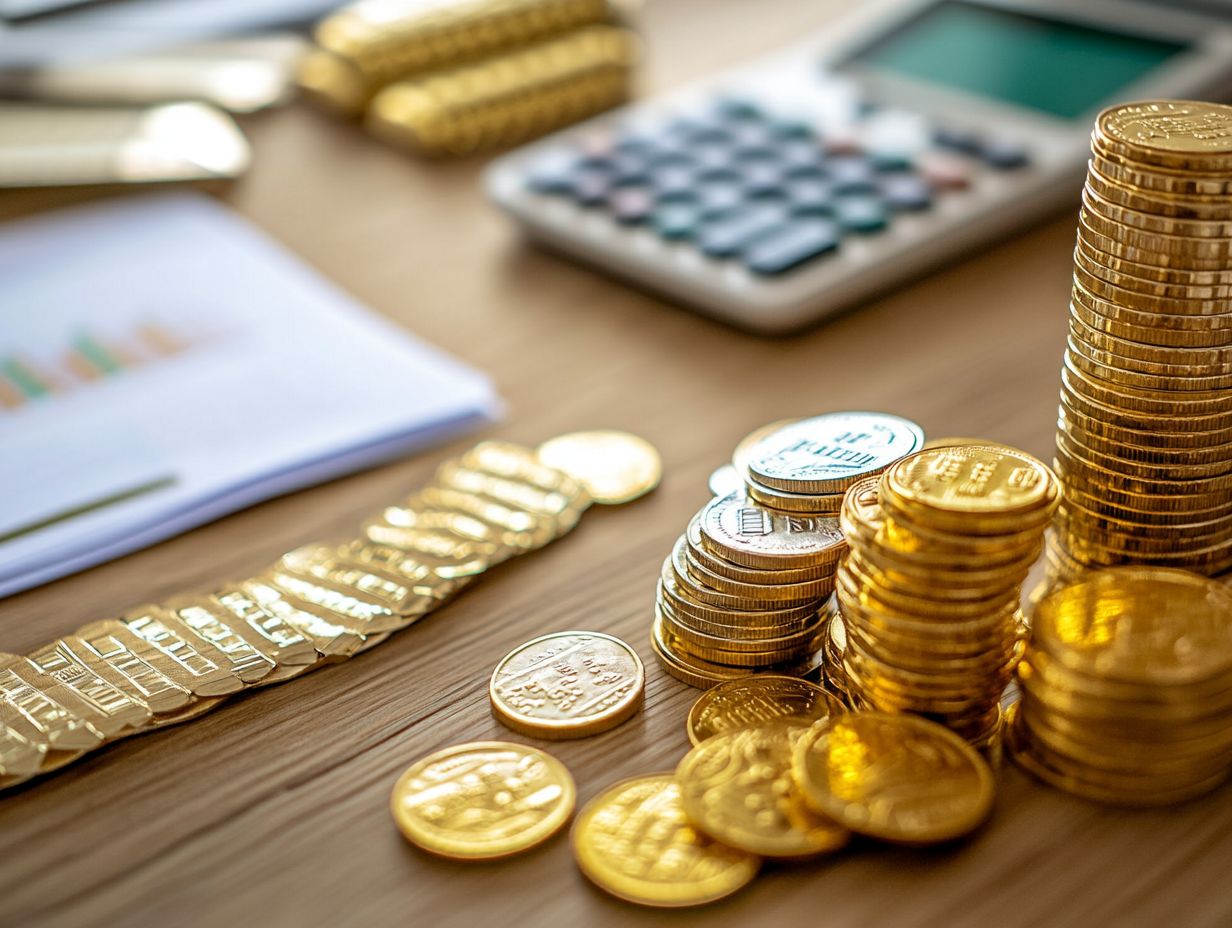
If you have specific questions about investing in precious metals, don’t hesitate to reach out for more information or advice.
What are tax strategies for diversifying my precious metals portfolio?
One effective strategy is to use a self-directed IRA. This account allows your investments to grow without being taxed until you sell them.
Another approach is to sell your precious metals during a year when you have lower income. This can help you reduce your tax bill.
Can I use a self-directed IRA to invest in precious metals?
Absolutely! A self-directed IRA lets you invest in various assets, including precious metals.
This offers tax advantages, allowing your investments to grow without immediate taxation.
What is the advantage of using a self-directed IRA for precious metal investments?
A self-directed IRA helps your investments grow without being taxed right away. It also diversifies your retirement portfolio with alternative assets.
Are there any tax implications when selling precious metals?
Yes, you might owe tax on profits when selling precious metals. If you hold an investment for more than a year, you may qualify for a lower tax rate on those profits.
How can I reduce my tax liability when selling precious metals?
Consider selling your precious metals in a year when your income is lower. This can reduce your overall tax burden.
You might also look into tax-loss harvesting. This means selling losing investments to offset gains from selling precious metals.
Do I have to pay taxes on precious metal investments in my non-retirement portfolio?
Yes, profits from selling precious metals in your non-retirement account are subject to tax. Keep track of your purchase and sale prices to calculate your gains accurately.










